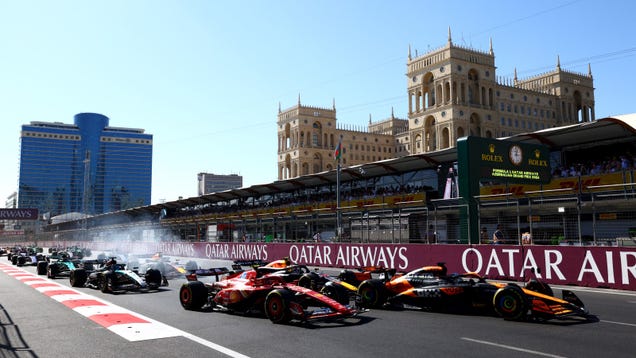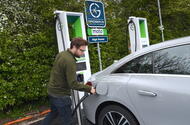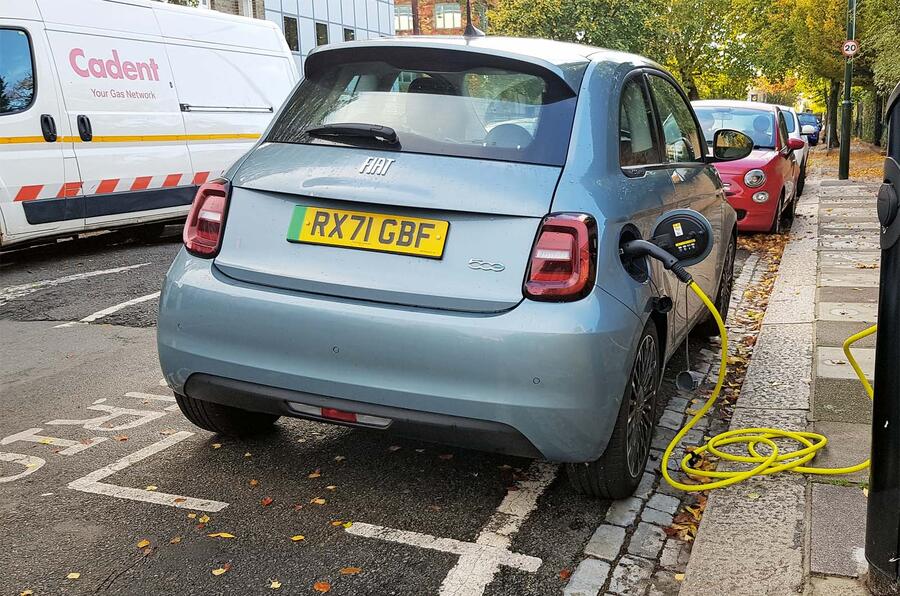Featured
Ineos Grenadier production halted due to supplier issues | Giga Gears

The Grenadier is built at the former Smart factory in Hambach, FranceShortage of trim pieces means output is unlikely to resume until 2025
Ineos has paused production of the Grenadier indefinitely after one of its critical suppliers hit financial difficulties.
Ineos Automotive CEO Lynn Calder told Automotive News Europe that it is unlikely to restart until “toward the end of the year or early next year” because the company has run out of a trim piece “that we can't sell the car without”.
Calder said the supplier of the part is in a “pre-insolvency situation” and that Ineos is seeking an alternative manufacturer for the trim piece.
The pause comes at an awkward moment for Ineos, which is on the cusp of launching in the critical Chinese market, as well as in Mexico.
According to figures from analyst Jato Dynamics, Ineos sold 847 Grenadiers across Europe (including the UK) between January and the end of August this year, a drop of 35% compared with the same point in 2023.
Data from the Society of Motor Manufacturers and Traders states that Ineos has registered 187 cars in the UK so far this year, a 67.9% reduction on the 583 that it had sold by the end of August last year.
These figures make its global expansion – to regions where large SUVs are in greater demand – especially important.
As previously reported by Autocar, Ineos is also planning a move upmarket, having put development of the smaller electric Fusilier on hold.
“What we wanted to achieve is no longer possible,” said George Ratcliffe, who was recently promoted to the role of Ineos’s chief for North America. “When the Grenadier project started, what we said was: ‘We’re going to build a really affordable, easy-to-fix utilitarian vehicle that will be good for farmers.’ It’s a gap in the market. But with the modern world and what you need – engines, pedestrian protection rules, CO2 emissions, regulation on vehicles – you cannot do that any more."
“F1 Drivers Urged to Stop Swearing on Team Radio: Giga Gears”

Formula 1’s broadcast features all kinds of graphics, animations and explainers to keep viewers engaged and up to date when they’re watching a race from anywhere in the world. But while all the commentary is exciting enough, the real highlight of F1 coverage comes when we can hear what the drivers really think over…

“Cut Fleet Public Charging Costs in Half with Matchmaking EV Service | Giga Gears”
 Digital platform could cut charging costs by 50%, with prices capped at 40p per kWh
Digital platform could cut charging costs by 50%, with prices capped at 40p per kWh
A “matchmaking” service enabling electric company cars to use the spare charging capacity of other operators has been launched by the Association of Fleet Professionals (AFP).
This move will plug gaps in the public networks while creating an additional source of income for owners, according to the AFP.
Electric vehicle registrations are heavily weighted to fleets in the UK, but charging can still be a challenge for businesses. The AFP has warned that expensive public networks can price fleets out of electrification, while issues installing depot and home charge points are stopping 65% and 49% of members respectively from deploying electric vans, according to member surveys.
However, members have also shown a willingness to cooperate, it says, with six in 10 van fleets prepared to make chargers available to other operators.
The service will launch as an online database, linking operators with available chargers on an informal basis. Any commercial arrangements will be ad hoc, but the AFP will offer advice if needed.
A dedicated digital platform will follow, introducing a more structured approach for fleets to register, search for and book charging sessions.
The concept is similar to Co-Charger, which enables home owners to earn money by sharing charge points with other drivers.
Committee members agreed a maximum price of 40p per kWh of energy, balancing attractive margins for charge point owners while keeping costs down for end users. That’s half the average price of DC rapid charging (80p per kWh) and almost a third less than slower AC units (56p per kWh), according to the latest Zapmap Price Index.
Development work on this approach will also addressing issues such as accessing private property, health and safety considerations and how to measure and pay for the energy used.
AFP chair Paul Hollick said: “If we can make the platform work, it should be quite a substantial boost for fleet EV charging.
“While it is not a universal solution – the provision of spare charging is probably not going to be evenly distributed across the country – it should provide a useful option for fleets beyond home charging, their own workplace charging, and pay-on-use public chargers.”
Fed Rate Cut Impact on Car Buyers | Giga Gears

Good morning! It’s Thursday, September 19, 2024, and this is The Morning Shift, your daily roundup of the top automotive headlines from around the world, in one place. Here are the important stories you need to know.

Councils and ICE drivers pose a threat to lamp-post chargers for electric vehicles
 Faulty chargers and empty charging bays in hard-to-park areas are drawing criticism
Faulty chargers and empty charging bays in hard-to-park areas are drawing criticism
With more than 40% of UK homes lacking a driveway, lamp-post chargers are billed as the solution for drivers to refuel their EVs locally. However, could reports of failing chargers and ICE car drivers being angry at losing parking bays undermine public support for them?
In July, west London’s Hounslow Council cut off the power to a number of lamp-post chargers in Chiswick after residents reported that they had stopped working.
Following an inspection, the council concluded that heavy rainfall had entered the chargers, causing them and the street lamps to which they were connected to fail.
The council has since restored power to the lamps while Ubitricity, the Shell-owned charger provider that installed the chargers, carries out repairs.
In April, residents in the same borough protested about the creation of lamp-post charging bays because they resulted in the loss of eight parking spaces for ICE cars on a street that had few EVs. The council promised to respond but didn’t reply to Autocar’s request for comment.
These aren’t the first instances of lamp-post chargers attracting negative publicity. In November last year, Portsmouth City Council disconnected 98 lamp-post and bollard-mounted chargers due to safety concerns.
The council said it had instructed provider Ubitricity to resolve the issue “as soon as possible”. However, seven months later, only 41 of those chargers had gone back online.
A spokesperson for the council said: “We hope to have restored power to the remaining chargers by the end of August.”
An Ubitricity spokesperson, commenting on the problems in both areas, said: “We are working closely with the local authorities to restore service to these areas.”
The UK has around 20,000 lamp-post chargers. They offer charging speeds of around 5kW and are provided by operators such as market leader Ubitricity and Char.gy, which installed London’s first such charger in 2018.

To finance more, councils can apply for a share of the UK government’s £350 million Local Electric Vehicle Infrastructure (Levi) Fund.
“Levi is a game-changer,” said Joe Michaels, CEO of Joju, a public charger installation and maintenance company. “The government is keen to increase the number of public chargers and lamp-post charging is an easy win. We’re feeling very positive about the future.”
Also helping to drive council uptake is that new-generation LED street lamps use less energy than the old bulb types, which means more is available for EV charging.
Michaels insists most lamp-post chargers are reliable. He said: “Water getting into the Chiswick posts was probably the result of poorly made posts or a poor installation.”
More recently, UK Power Networks, the power distributor for thousands of street lamps across London and the south, gave the green-light for more chargers to be installed, even on older lampposts.
Its report, conducted with Shell ubitricity, came after local authorities were ordered to stop installing chargers on older lampposts with legacy wiring due to safety concerns. The report concludes, however, that there are no safety concerns, and has told all 133 authorities - which own and operate the lampposts - within its network to continue with their planned roll outs.
Challenges still remain, however. The AA has reported that despite a recent price fall to around 59p per kWh, peak-time energy tariffs for kerbside charging can make running an EV more expensive than an equivalent ICE car. As such, it has asked the government to cut VAT on tariffs.
In 2022, Ubitricity introduced smart charging, which allows residents to schedule their charging session to start during the company’s off-peak overnight tariff.
As Chiswick’s residents have pointed out, lamp-post chargers and their dedicated parking bays often go unused and empty too – but this is of course a classic chicken-or- egg scenario.
“There’s no question that an empty bay in an otherwise crowded street annoys people,” said Michaels. “However, some councils actually see an empty bay as an incentive for non-EV drivers to consider making the transition if it’s going to solve their parking crisis.”
